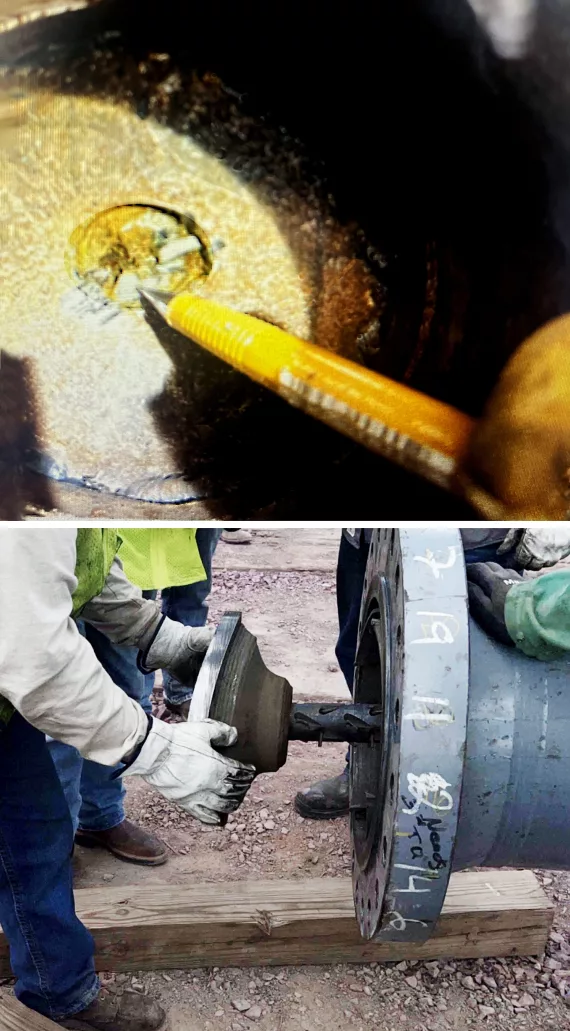The Challenge
As part of normal maintenance, the operator of a natural gas pipeline system in the northeast U.S. cleaned their 42-inch pipeline with liquids. After running displacement pigs to dry the line, however, an unknown volume of liquids remained in a low point, restricting product flow.
To evacuate the pooled liquids, the operator decided to send a probe into the pipeline, with access through a hot tap.
A third-party service provider prepared to hot tap the one-inch-thick carrier pipe by attaching a 4-inch branch with reinforcement pad to strengthen the branch joint, flange, and valve assembly. When the service provider tried to drill the 4-inch tap through the valve, the pilot bit seized and broke—its remnants were left in the partially penetrated guide hole.
The operator then contracted a second service provider to complete the tap, but they were unsuccessful as well. In their attempt, the pilot bit hit what remained of the broken bit, knocking the cutter into the side of the 4-inch nozzle and damaging it. As a result, the 4-inch branch connection now also needed to be replaced.
With the time clock on their planned shutdown ticking away and two futile attempts to drill the pipeline behind them, the operator needed a fresh approach, including a way to remove the broken bit.
The Solution
They turned to the team at WeldFit, which brought together savvy engineering, skilled pipeline tapping technicians and a proven track record of drilling through difficult pipe. WeldFit recognized that the material properties of the pipeline meant achieving success would require a bespoke response.
After a couple of meetings with the operator, WeldFit developed a recovery plan that required cutting away the complete 4-inch nozzle. But first, the nozzle and valve assembly had to be removed so technicians could address the broken pilot tip. The plan also included welding a centering plate inside the remaining segment of branch nozzle onto the top of the carrier pipe.
To accomplish those goals, WeldFit decided to treat the large diameter pipeline the same way they would a tank-tap, in which the surface is round but is so big it essentially has a flat surface.
WeldFit’s engineers designed a long-reach 16-inch cutter so the technicians could cut around and retain the 4-inch nozzle and the reinforcing pad assembly installed by the previous contractor. A 2.5-inch spade drill, which is typically used for industrial deep hole boring, drilled the pilot. Not only was the spade drill tip appropriate for the pipeline’s material properties, but it also provided the weight and power needed to cut through the pipeline successfully on the first attempt. To optimize control over the drilling, the technician started by manually powering the tapping machine. That gave him more confidence before switching on the hydraulics and automating the rest of the cutting.

The Results
WeldFit technicians removed all pieces of the broken bit as well as the rest of the loose material left from the first two hot tap attempts. This was a technical, high skilled, customized project that emphasized the level of innovation operators often trust WeldFit to provide.
WeldFit knows that every pipeline project brings unique challenges, even routine ones. Combining vast experience, deep knowledge, and comprehensive planning gives WeldFit an advantage on the job site in every situation.
Pipeline Expertise
You Can Trust
/ Highly Skilled Technitions
/ Tapping & Plugging Experts
/ Engineering Support
/ Proven Track record
Call your representative today to schedule our experts on your pipeline project—our experience will make your job easier: 713-460-3700.
